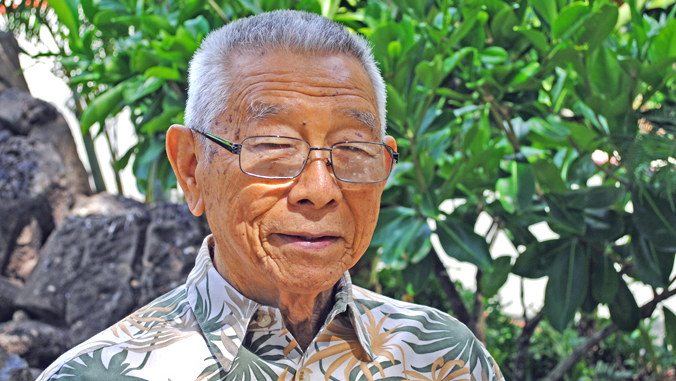
Fujio Matsuda, president of the University of Hawaiʻi from 1974 to 1984, passed away in the early hours of August 23, surrounded by his wife of 71 years and six children. He was 95.
“He taught that we must walk with humility in others’ shoes, because all are valued equally. We all strive universally to fulfill the same needs: being a part of a family, cherished, and with the opportunity to do good in the world. This was the groundwork of every decision he made throughout the many challenges and joys of his long life,” Matsuda’s family said in a statement.
“Dr. Matsuda is the reason I am in Hawaiʻi,” said UH President David Lassner. “Even in the 1970s, before the Internet or the PC, he intuitively understood that computers would change the way we teach and learn. I came to UH to help in the startup of his statewide Computer Based Education Pilot Project in 1977, and I never left. Fuj led UH and then RCUH (Research Corporation of the University of Hawaiʻi) balancing vision and pragmatism, and always with integrity. I am proud to have known him.”

Matsuda was born in Honolulu and grew up in Kakaʻako. A graduate of McKinley High School in 1942, he volunteered to become a member of the 442nd Regimental Combat Team’s 232nd Combat Engineer Company in World War II. After his military service, he studied at UH, then transferred to and graduated from Rose Polytechnic Institute in Indiana in 1949. He earned a doctorate from MIT in 1952, and remained there as a researcher for two years. He moved to the University of Illinois for a year as a researcher.
In 1955, Matsuda came home to Hawaiʻi, where he taught in the UH engineering department until 1962. In that year, he was picked by Gov. John Burns to lead the state Department of Transportation. He served in that role until 1973, when then UH President Harlan Cleveland asked Matsuda to return to UH as vice president of business affairs.
Cleveland resigned as UH president in December 1973, effective the summer of 1974. In July 1974, the Board of Regents appointed Matsuda the ninth president of UH. He was the first and only UH president of Asian descent. He was also the first Asian-American president of a major university in the country. Under his leadership, the first systemwide strategic plan was developed, and the East-West Center was separated from the university. Built under his presidency were the UH law school and its library, Korean Studies Center, Marine Sciences building, athletic complex and swimming pool, Institute for Astronomy, Gilmore Hall and art building.
Fondly nicknamed “Fudge,” Matsuda served as president until May 1984. He served as executive director of the Research Corporation of the University of Hawai‘i (RCUH) from 1984 to 1994. He remained active in the community, helping to form the Pacific International Center for High Technology Research and served as its chairman. He was a member of other boards, including RCUH and the Japan-American Institute of Management Science. In 2003, he led a fundraising drive to raise $9 million to save the Japanese Cultural Center from having to sell its building and possibly disband. In 2004, he was honored as a “Living Treasure” by the Honpa Hongwanji Mission of Hawaiʻi.
Honolulu Community College’s Fujio Matsuda Technology Training and Education Center is named after the late president.
His family is planning to hold a public memorial service in the future when the risks of COVID-19 have subsided.
The family plans to establish the Fujio and Amy Matsuda Scholarship in his honor. In lieu of flowers or gifts, the family requests consideration of support for this fund.

